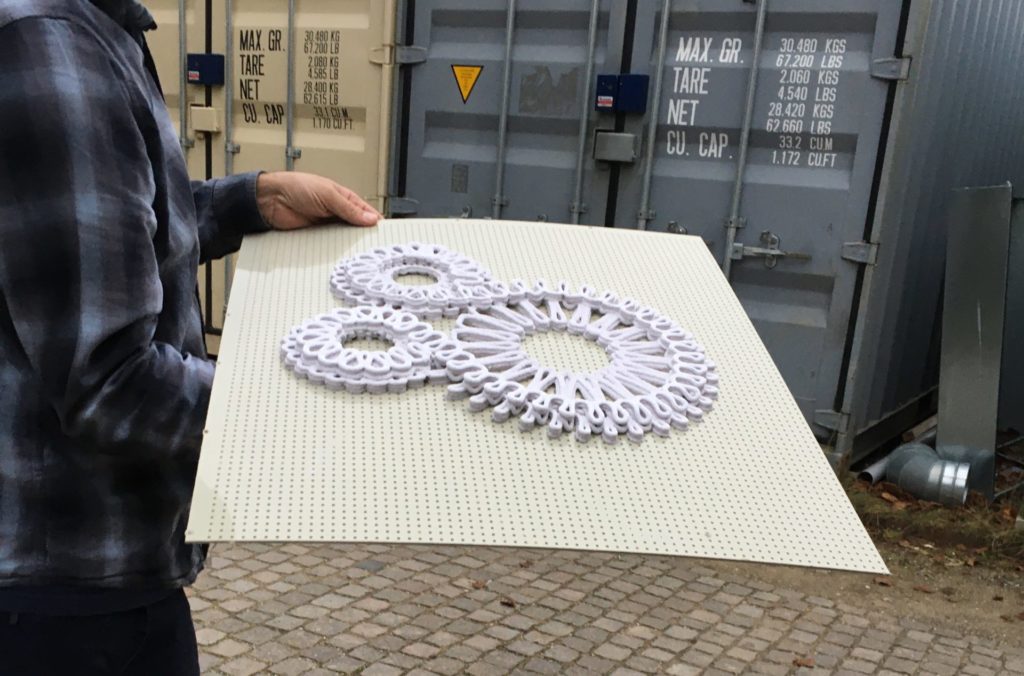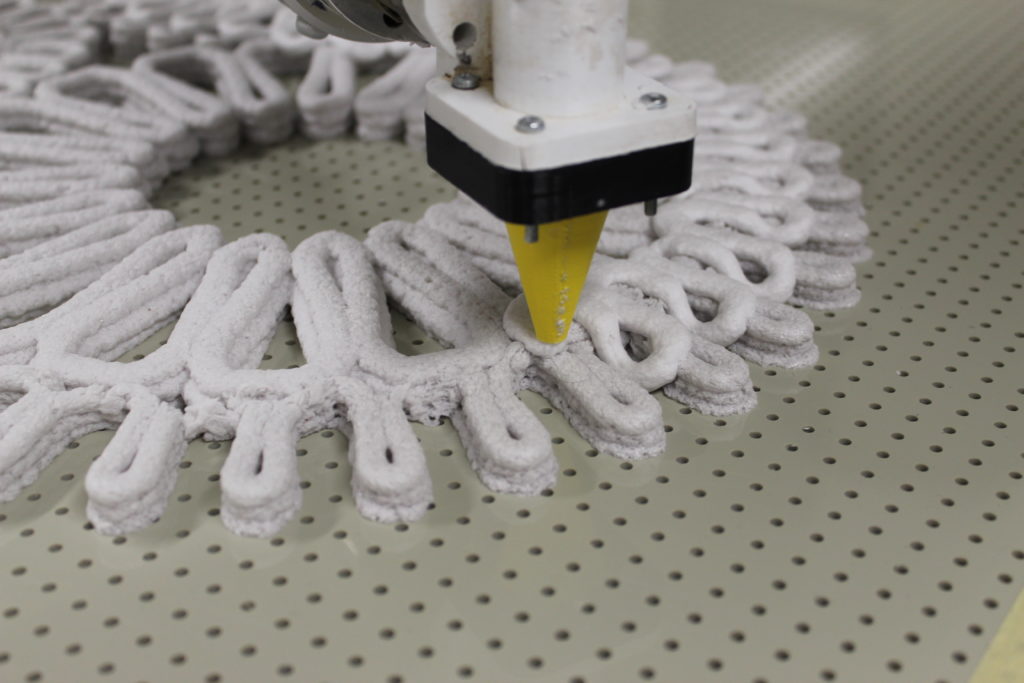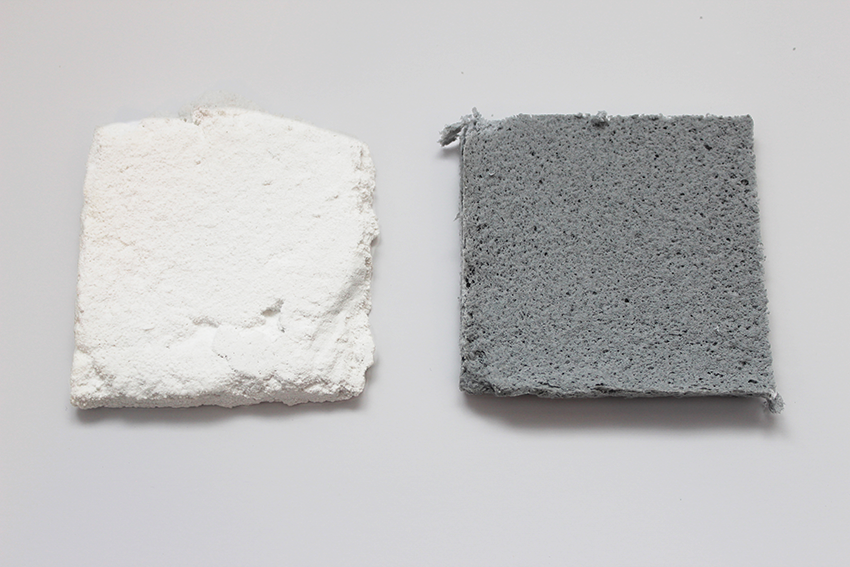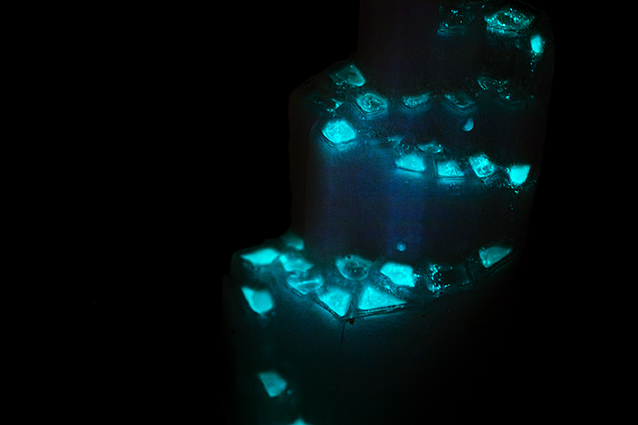L’accent fantômeet autres impressions séfarades
is an editorial project sitting at the intersection of design, history and literature. This book is a reflective journey on the issues of transgenerational transmissions and memories published by Aurélie Mosse in Press Universitaires de Vincennes.
Memory is sometimes nothing more than sensations, colours, rhythms and sounds that surface in our consciousness without warning, without a word about their origins.
Navigating between image and prose, L’accent fantôme et autres impressions séfarades is the story of an introspective journey in which words reveal the inner scene of an absence that has been repressed for too long. As she re-reads her work as a designer and researcher, Aurélie Mosse questions her Jewish origins, which have unconsciously shaped her creations. Each project carries with it a memory, an intuition waiting to be revealed and interpreted. Little by little, the book brings us closer to the hidden figures of her great-grandparents on her father’s side, whose memory she wanted to rediscover and honour. As if the void, the absence, could not take shape, could not become a tangible reality without passing through the act of creation.
Readers’ opinion La résonnance du concept de fantôme, d’absence, d’ombre familiale autour de soi, est tellement fine et travaillée, étirée comme une douce poésie, elle devient fascinante et… Tellement sensée ! The Witchy
Ce livre est un fragment d’une histoire personnelle qui s’inscrit dans l’histoire avec un grand « H », et qui souligne l’importance de comprendre notre histoire familiale pour construire son identité. Claiore
Un livre très original dont on tourne les pages au gré de son envie pour découvrir un objet, une réflexion, un sens. Une très belle présentation sur un papier glacé avec de jolies photos des objets travaillés par l’autrice. Un beau livre à offrir aux amateurs d’art et d’histoire. Recettesetrécits
Source: Babelio
Editor: Presses Universitaires de Vincennes, collection Singulières Migrations. The book is available here in French.
Acknowledgement: Book published with the support of the research laboratory of Ecole des Arts Déco (Ensadlab) and the EUR Artec. It has benefited from an ANR grant under the Investissement d’Avenir programme (ANR-17-EURE-0008).
Related publications
- Fischer, G., 2024, L’accent fantôme et autres impressions séfarades, d’Aurélie Mosse, Printemps de l’Université des Créations – Podcastics, 20 mai 2024.
- Azar, F., 2024, Para meldar – L’accent fantôme et autres impressions séfarades , Kaminando y Avlando, n°49, avril-mai-juin 2024, pp43-44.
- Mark Rothko, Chana Orloff: la judéité subtile, L’ombre au tableau – épisode 1, Akadem, 05 Janvier 2024. Entretien croisé avec Isy Morgensztern, Aurélie Mosse, Pascale Samuel par Avishag Zafran.
- Mosse, A., interviewed by Azar, F., 2014, Avlando kon… Aurélie Mossé, Kaminando y Avlando, n°7, January, February, March 2014, pp3-7.
This interdisciplinary project represents the textile axis of the Priority Research Programs and Equipment (PEPR) dedicated to the recyclability, recycling and reincorporation of recycled materials. It gathers 4 main French partners: ENSAIT, INSA Lyon, Université de Lille and Ecole des Arts Déco.
Textile materials have two essential characteristics: one is technical, resulting from the choice of fibers and their assembly into fabrics; the second is aesthetic, linked to the material and its finish. The value of a textile object is associated with both technique and aesthetics, and is linked to actual wear and tear, complemented by consumer attachment. The end-of-life of these textiles may occur because they are worn and damaged, or because they are no longer appreciated or considered obsolete. So they can have several lives, being reused, repaired, transformed (upcycled) before being shredded for recycling.
This 5-year research project gathers numerous researchers from ENSAIT, INSA Lyon, Université de Lille and Ecole des Arts Déco) that focus on those various loops of possible ends of life, on the ecoconception of textiles and the analysis of discarded textiles, as well as the design of centenary old textile objects with a lifespan exceeding two generations. The textile object will be studied on 3 scales: the molecular scale, that of the polymers making up the fibers, the scale of textile fabrics, and the scale of articles, and in particular garments.
Project coordinator: Anne Perwuelz, Gemtex -ENSAIT
ENSAD principal investigator: Jean-François Bassereau
Partners: ENSAIT, INSA Lyon, Université de Lille et ENSADLAB – Ecole des Arts Décoratifs
Funding PEPR – Agence Nationale pour la Recherche (1085 k€) referenced as « ANR-22-PERE-0006 ».
Gossamer timescapes: designing self-actuated by the home is a practice-based and design-led research sitting at the intersection of textile design, architecture and smart technologies. It explores how self-actuated textiles can inform new poetical and cultural possibilities for smart technologies in the field of design. The research focuses on the role three-dimensionally dynamic textiles can play in contributing to the shaping a culture of interconnectivity within the context of the Western home.
By relocating the design of smart materials beyond a culture of the measured time and space -where technology has been primarily conceived as a mean to control and overcome the limitations imposed by nature-, self-actuated textiles can contribute to more resilient practices of inhabitation. To do so, this thesis argues for the need to underpin the design of smart materials and technologies by principles of interconnectivity- interactions grounded in an earth-bound temporality in which technology is less conceived as a user-oriented than an earth-life centered means. In other words, self-actuated textiles, by challenging the thinking and making of the post-modern western home as a reality disconnected from nature, can contribute to the design of more sustainable practices of inhabitation.
Building upon the construction of a theoretical framework in which the question of time is placed as the centre of the inquiry, a series of design experiments into the appropriation of photovoltaic, light-responsive and electro-active polymer technologies contextualise and support this argument. These experiments are structured in a series of conceptual, material and immersive probes developed from a material tale methodology mixing fragments of reality and fiction to explore the poetic and cultural potential of smart technologies. These probes evolved in dialogue with each other and simultaneously with the construction of the theoretical framework of this thesis. They are part of the same design process. Reef – an experiment into the design of a self-actuated ceiling surface changing with the wind underpinned by electro-active polymers – plays a prominent role in the construction of the thesis’ argument by investigating the appropriation of values of interconnectivity into smart domestic surfaces.
Main researcher: Aurélie Mosse
Funding: This research was undertaken in the Centre for IT & Architecture, Royal Danish Academy, School of Architecture in collaboration with Textile Futures Research Centre, Central Saint Martins, University of the Arts. It was supported by a PhD grant in Tectonic Textiles supervised by Mette Ramsgaard Thomsen & Carole Collet and administrated by the Royal Danish Academy.
Further details: here
SoftWEAR is a EU-funded MSCA doctoral network focused on soft actuators for wearables and exoskeleton, led by Linköping University, Sweden
SoftWEAR is a highly interdisciplinary doctoral network in the emerging and rapidly growing field of wearables, with a unique focus on soft actuators for wearables and exoskeletons. The primary objective of SoftWEAR is to train young researchers in the multidisciplinary science of soft actuators for integration in wearables and augmenting textiles. This will be achieved by merging chemistry, physics, mechanics, electronics, textile technology, design, human-technology interaction and ethics in a truly interdisciplinary manner, while teaching essential skills in ethics, product development, intellectual properties right and industrial realisation, thus providing a unique added value to the careers of the Researchers. This ambitious aim will be accomplished by on-the-job training on innovative research projects developing beyond-the-state-of-the-art soft actuator technology and integrating this into active garments and soft exoskeletons. This will be carried out at leading academic groups and by immersion in applied projects at the industrial partners. SoftWEAR will thus provide Europe with highly educated researchers in the emerging field of wearables, focused on integrating actuation. This will put Europe in a world-leading position in this field and will supply European companies with a highly skilled workforce in soft actuators and advanced smart textiles.
Within this context, Aurélie Mosse acts as a training officer and main supervisor for the practice-based PhD hosted by Ecole des Arts Deco. By embedding design thinking and textile crafts from inception through a design-led methodology, he/she will develop an integrative approach to soft actuators’ conception addressing their multiple scales of design from molecule to object and thereby bridging the gap between science and design. Outcomes will showcase potential new expressions, applications or crafting techniques for soft actuators at the intersection of smart textiles, wearables and ecodesign.
Project coordinator: Edwin Jager, Linköping University
Main academic partners: Linköping University (SE), Cergy Paris Université (FR), Danish Technical University (DK), Johannes Kepler Universitat Linz (AT), Technical University Dresden (D), Hoegskolan i Boras (SE), Ecole des Arts Déco (FR), University of Twente (NL), Universita degli studi Firenze (IT), EPFL (CH).
Dedicated website: https://softwear-dn.eu/
Funding: MSCA-DN, 2021, Horizon, EU. (2 812 k€) referenced under project n° 101072920
Related publications
examines the 3D printing of biomaterials induced by luminescent and calcifying bacteria for circular design applications. The project is an interdisciplinary research enquiry sitting at the intersection of architecture, design and microbiology led by Soft Matters, in collaboration with CITA, 3d.FAB & Soletanche Bachy.
Architects and designers have usually not exploited the poetic, aesthetic and cultural potential of biotechnologies with the same energy and extent that engineers have exploited their functional possibilities. This is particularly true in respect to recent bioprinting techniques that can be briefly defined as the 3D printing of living materials and systems. Acknowledging the need for interdisciplinary approaches to bioprinting research, ImpressioVivo is a biodesign-led project examining the circular conception and fabrication of 3D printed bio-based materials induced by light-emitting and calcifying bacteria for an architectural and design context.
Concerned with challenging the perception of resource as infinite and by promoting a resilient approach to material resources relying both on post-industrial waste and bio-based renewable deposits, the project seeks to understand how designers and architects can work with bacteria to design 3D printed bioluminescent and bio-calcified materials for circular design applications. A first material axis focus on the design of bioluminescent living hydrogels induced by the Vibrio Fischerii luminescent bacteria and a second one on the calcification of an upcycled foam made from paper waste by Sporosarcina pasteurii.
By studying the appropriation of these living organisms through advanced robot-controlled 3D printing technologies, the project will establish a conceptual, material and technological framework for a bio-controlled bacteria growth and 3D extrusion process supporting the circular design of materials based on petroleum-free, renewable resources for interior design & architectural applications. These results will ultimately be embodied in 1:1 scale demonstrator(s) displayed in a public context. A first demonstrator based on the 3D printing of a bioluminescent materiality intends to reflect on what does it mean to apprehend architecture as a temporary living environment while we expect the second one to illustrate the potential of bio-calcified paper-foam as lightweight load-bearing materials.
By pushing the 3D printing of bioluminescent and bio-calcified materials towards an architectural scale, ImpressioVivo will not only design innovative materials and techniques contributing to the expansion of the bioprinting field, but also respond to the vital need of transforming the material culture of creation in architecture and design in the light of current ecological challenges. Due to its interdisciplinary nature, the project will also contribute in bridging the gap between science, design and engineering, a necessity when it comes to such a transversal challenge as the bioeconomy.
Project coordinator: Aurélie Mosse
Main researchers: Aurélie Mosse (PI), Daniel Suárez, Vincent Rennie, Quentin Poudoulec.
Partners: Mette Ramsgaard Thomsen, Martin Tamke (CITA, Royal Danish Academy); Christophe Marquette, Emma Petiot (3d.FAB, Univ. Lyon 1), Soletanche Bachy.
Scientific advisory board: Arnaud Dubois (CNAM), Michael Kühl (University of Copenhagen); Kim Poldner (The Hague University of Applied Science); Meng Zhang (Hub for Biotechnology & the Built Environnement).
Funding JCJC grant of Agence Nationale pour la Recherche (ANR), (287k€) referenced as n° ANR-21-CE43-0023-01
Acknowledgement: We thank Soletanche Bachy and ViscoTec France as well as our Paris Sciences et Lettres (PSL) colleagues Nicolas Desprat, Dario Dell’Arciprete and Cécile Monteux for their complementary support.





Related publications
- Mosse, A., Smith, C., 2025, Building furniture with bacteria: from bacillus to bench seats… [Podcast], 4th of February 2025, The Naked Scientists.
- Mosse, A., Ramsgaard Thomsen, M., Rennie, V., Suárez Zamora, D., Tyse, G., Tamke, M., 2024, Pepeyoca: Reconsidering The Bioreactor As A Bioluminescent Living Wall For Human-Bacterial Co-Inhabitation,In Herrera, P.C., Gómez, P., Estévez A.T., Torreblanca-Díaz, D.A. (Eds.), SIGraDI 2024 -Biodigital intelligent systems, 13-15th of November 2024, IBAG-UIC, Barcelona, Spain, pp. 2287-2299.
- Mosse, A., Rennie, V., Poudoulec, Q., Suárez Zamora, D., 2024, Paper waste grown as a biocalcified foam: perspectives from a bacterial and design viewpoint, Research Directions: Biotechnology Design, Cambridge University Press, pp. 1–24. doi: 10.1017/btd.2023.11
- Mosse, A.; Bassereau, J.F., 2022, ‘Material probes into paper waste as a bacterially-induced and 3D printed foam: combining biodesign and circular principles’,, In Frier Hvejsel, M., Cruz, P.J.S. (Eds.), Structures and Architecture. A viable urban perspective? Proceedings of ICSA 2022, 5th International conference on Structures & Architecture, Aalborg, 6-8th of July 2022, CRC Press.
- Tyse, G., Tamke, M., Ramsgaard Thomsen, M., Mosse, A., 2022, ‘Bioluminescent micro-architectures: planning design in time, an eco-metabolistic approach to biodesign’, Archit. Struct. Constr., Springer.
is a PSL pre-maturation project led by Soft Matters, in collaboration with Mines Paris Tech and Ecole Nationale Supérieure des Arts et Industries Textiles (ENSAIT)
The COCREAT project (conception of responsible creation tools as textile items) is led by design-led researchers with a background in textile and fashion from the Soft Matters research group of EnsadLab, exploring in this context how to develop more flexible tools allowing to modulate phases of creation and fabrication to support a more resilient perspective to garment production. The focus lies here in the conception of design/fabrication tools supported by mecatronics, automation and electronics for the design of textiles items for ready-to-wear and luxury clothing and accessories.
In order to bring it to commercialization, this project aims at developing an anthropo-mecatronic device in-between knitting and weaving allowing to turn a single yarn into textile items.
COCREAT questions the notion of “bespoke tailoring” through the design of new garments and textile items, according to anthropo-dimensional measurements (varying according to people and objects) electronically or manually controlling the tuning and functioning of machines. The equipment is capable of a multi-modal dialogue (from the 100% manual to the 100% automatic) within the garment creation and conception phase with the fashion designer and then electronically controlling the manufacturing of textile pieces without producing scraps. This co-robot can be assimilated to rapid-prototyping processes. It relies on a patented technology developed by J. Vicerial during her SACRe (Sciences Arts Creation Research) PhD at PSL.
Coordination: Aurélie Mosse, Jean-François Bassereau (Ensadlab)
Main researchers: Jeanne Vicerial (Clinique Vestimentaire), Philippe Faul (Lycée Voillaume), Yvon Gaignebet (Mines Paris Tech)
Funding: Recipient of the prematuration call PSL Valo/ QLife 2020
Related publications:
- Vicerial, J., 2019, Clinique Vestimentaire: pour un nouveau paradigme de la création et réalisation vestimentaire sur-mesure, thèse doctorale SACRe, préparée à l’Ecole des Arts Déco, Université PSL
The Papier Plume technology is the result of Cardepar, a research project between 4 Grandes écoles belonging to Paris Sciences et Lettres University (PSL), led by Soft Matters, Ensadlab in collaboration with ESPCI, Chimie Paris Tech and les Mines Paris Tech, in the framework of a transversal programme of the University.
Innovation – It lies in the responsible design of a bespoke material and its forming process from local paper waste. This new foam material made from up-cycled paper represents an alternative to foam core. The Papier plume supersedes the latter in terms of use value, environmental impact and openess. and be itself up-cycled several times. It has been the object of a patent submission, registered on the 31st of January 2018 under the following number FR 1800097.
Development – The Papier plume is now in a stage of maturation, in the perspective of its transfer as workshops for arts, design and architecture schools but also as applications in multiple sectors. Feel free to contact us to discuss further perspectives around this technology.
Further results We extended form-finding explorations for this foam in the Today’s paper waste, tomorrow’s materials MA workshop as presented in the video above.
In the ImpressioVivo project, we investigate more specifically its 3D printing and rigidification through biocalcification. Besides, the technology has been referenced in 2024 in the Ecothèque, a French eco-material platform for scenography.
Project leader: Jean-François Bassereau
Main researchers: Aurélie Mosse (ENSAD), Cécile Monteux (ESPCI), Olivier Jourdan, Mathieu Merlet-Briand
Funding: Initiative de Recherche Stratégique et Interdisciplinaire (IRIS), Paris Sciences et Lettres University
Related publications
- Mosse, A.; Bassereau, J.F., 2022, ‘Material probes into paper waste as a bacterially-induced and 3D printed foam: combining biodesign and circular principles’. In Frier Hvejsel, M., Cruz, P.J.S., Structures and Architecture. A viable urban perspective? Proceedings of ICSA 2022, 5th International conference on Structures & Architecture, Aalborg, 6-8th of July 2022, CRC Press.
- Mosse, A., Bassereau, J.F., 2019, ‘Soft Matters: en quête d’un design textile et matière plus résilient’, Sciences du Design, n°9 Développement durable (Mai 2019), Paris: Presses Universitaires de France.
- Bassereau, J-F., Monteux, C., Mosse, A., Merlet Briand, M., Jourdan, O., 2018, Le papier plume, conception d’un matériau up-cyclé par et pour la création’, poster, Matériaux, 19-23 Novembre 2018, Strasbourg .
examines the making of a bio-luminescent micro architecture. The project is an interdisciplinary research enquiry sitting at the intersection of architecture, design and microbiology exploring the use of light-emitting bacteria as architectural materiality. The project is a collaboration between Soft Matters, Ensadlab, ENSAD and CITA .
By investigating the 3D printing of bioluminescent bacteria, we are questioning how architecture can be host for an ecology of species in symbiotic coexistence.
The project investigates the critical thinking and appropriation of living bacteria as an architectural materiality. To do so, we explore bioluminescence: a chemical form of light produced by many marine organisms, some insects and mushrooms. In ‘Imprimer la lumière’ we use bioluminescent bacteria to examine the metabolism of a living architecture.
The project is conceived over a series of experiments appropriating techniques for growing luminescent bacteria and developing the technologies for 3D printing the extrusion of their medium. 3D printing is explored as a means of liberating the forming processes of the medium to investigate how topology and surface treatment can drive the life cycles and therefore the light performance of the bacteria. In Imprimer la lumière, we use a collaborative robot with a bespoke micro dispenser. This allows us to address an architectural scale of fabrication distinct from dedicated bioprinter that operate at smaller scales. The building of new 3D printing methods for collaborative robots also allows us to interface with programmable design environments, allowing a higher degree of control and steering of both the design and the environment for the organisms.
Imprimer la lumière sits at the intersection of biodesign and digital fabrication. It opens up new perspectives for the design and appropriation of bioluminescence as an architectural materiality. At a conceptual level, the project asks what happens when the material of architecture becomes living: what are the new concepts, methods and technologies that are needed to design for and with living materials?
Main researchers: Aurélie Mosse, Mette Ramsgaard Thomsen, Martin Tamke
Funding: IFD sciences program of Institut Français du Danemark, Danish Arts Foundation, ArTeC.
Related teaching project: Crafting 3D bioluminescence
Related publications:
- Ramsgaard Thomsen, M., Tamke, M., ,Tyse, G., Mosse, A. , 2023, Imprimer la lumière: bacterial luminescence as a 3D-printed spiral micro-architecture, .able journal .
- Ramsgaard Thomsen, M., Tamke, M., Mosse, A., & Tyse, G, 2021. Designed Substrates For Living Architecture Performance – Imprimer La Lumière. In A. Tadeu & J. de Brito (Eds.), Proceedings of CEES 2021 – Construction, Energy Environment & Sustainability. Itecons, University of Coimbra, Portugal.
- Ramsgaard Thomsen, M., Tamke, M., Mosse, A., Sieder-Semlitsch, J., Bradshaw, H., Fabritius Buchwald, E., Mosshammer, M., 2022. ‘Imprimer la lumière: 3D printing bioluminescence for architectural materiality’, In: Yuan P.F., Chai H., Yan C., Leach N. (eds) Proceedings of the 2021 DigitalFUTURES. CDRF 2021. Springer, Singapore.
- Mosse, A., 2020. ‘Décors textiles: du déchet à la Biogée’, Revue Décor, Paris: Ensad, 4th of December 2020.
